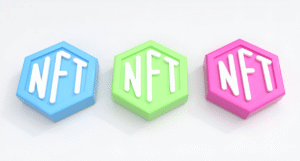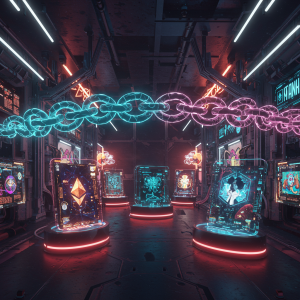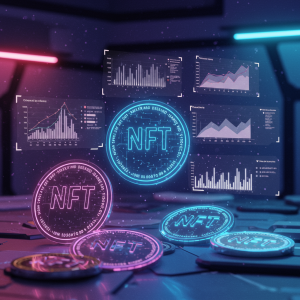Dynamic NFTs: The Evolution from Static Collectibles to Interactive Assets

The NFT market has undergone remarkable transformation since its mainstream emergence. What began as simple, static digital art pieces has evolved into something far more sophisticated and engaging. Dynamic NFTs represent the next significant leap in this technological journey.
Unlike their static predecessors, dynamic NFTs contain programmable elements that enable them to change based on external inputs, user interactions, or the passage of time. This fundamental shift is redefining what it means to own digital assets.
What Makes an NFT “Dynamic”?
At their core, dynamic NFTs harness smart contract functionality to enable ongoing changes to metadata, visuals, or utility. This adaptability creates digital assets that feel alive rather than frozen in time.
Think of a traditional NFT as a digital photograph—fixed and unchanging from the moment of creation. In contrast, dynamic NFTs function more like evolving digital organisms that respond to their environment.
The technical architecture powering these assets typically involves on-chain oracles that feed external data to the NFT’s smart contract. This data then triggers predetermined changes according to programmed conditions.
Real-World Applications Emerging Today
Dynamic NFTs are already demonstrating their versatility across multiple sectors and use cases.
In gaming, characters represented as dynamic NFTs can level up, acquire new abilities, or change appearance as players progress through challenges. This creates a deeper connection between player achievement and digital ownership.
For music and entertainment, artists are releasing songs as dynamic NFTs that unlock additional content, remix options, or even evolve their sound based on how many times they’re played or shared.
The sports collectible market has embraced dynamic NFTs that update stats in real-time. A basketball player’s NFT card might change based on their performance in last night’s game, creating an exciting bridge between physical events and digital collectibles.
The Technology Behind the Evolution
Creating truly dynamic NFTs requires thoughtful technical architecture. Most implementations rely on a combination of smart contracts, decentralized storage solutions, and oracle networks.
The smart contract contains the logic determining how and when the NFT will change. Meanwhile, decentralized storage systems like IPFS ensure that the visual and metadata components remain accessible regardless of changes to the underlying asset.
Oracle networks like Chainlink play a crucial role by securely delivering external data to these smart contracts. This connection to real-world information is what enables dynamic NFTs to respond to events outside the blockchain.
As experts in the NFT space, the team at NFT Marketo has been tracking these technological developments and helping creators implement dynamic elements into their collections since the concept first emerged.
From Collectibles to Experiences
The shift from static to dynamic represents more than just a technical upgrade—it fundamentally changes how people interact with their digital assets.
Static NFTs primarily derive value from scarcity and provenance. They’re about ownership and authentication of a specific digital moment. Dynamic NFTs build upon this foundation but add the dimension of ongoing engagement and evolution.
This transformation creates digital assets that reward long-term ownership with new experiences and functionalities over time. Collectors become active participants rather than passive owners.
Challenges in the Dynamic NFT Ecosystem
Despite their promising potential, dynamic NFTs face several obstacles to mainstream adoption.
Technical complexity remains a significant barrier. Creating truly responsive and evolving NFTs requires more sophisticated programming skills than producing static assets. This expertise gap limits who can create compelling dynamic experiences.
Gas fees and computational costs also present challenges. Each change to a dynamic NFT requires blockchain transactions that incur fees. Designing systems that balance interactivity with cost efficiency becomes crucial for sustainability.
Finally, education represents perhaps the most significant hurdle. Many collectors and creators are still mastering the concepts of traditional NFTs, let alone understanding the possibilities and mechanisms of dynamic versions.
Looking Toward a More Interactive Future
The evolution toward dynamic NFTs signals a broader shift in how we think about digital ownership. As the technology matures, we’ll likely see increasingly sophisticated interactions between these assets and their environments.
Community-driven evolution represents one particularly promising direction. Imagine collections where holders collectively vote on how their NFTs evolve, creating a shared narrative and experience.
Cross-platform interoperability also holds tremendous potential. Dynamic NFTs could eventually respond to actions across multiple games, social media platforms, or metaverse environments, creating digital identities that truly span the entire web3 ecosystem.
Conclusion
Dynamic NFTs have transformed digital collectibles from static artifacts into living, evolving digital experiences. By incorporating programmability, interactivity, and responsiveness to external factors, these next-generation tokens are redefining what’s possible in the realm of digital ownership.
As creators and collectors continue exploring this technology, we’ll undoubtedly witness innovative applications that further blur the line between static collectibles and interactive digital experiences. The evolution from simple JPEGs to responsive, evolving assets represents not just a technical achievement but a fundamental rethinking of our relationship with digital property.
For those looking to stay at the forefront of this evolution, understanding the technical foundations and creative possibilities of dynamic NFTs will prove increasingly valuable in the coming years.








